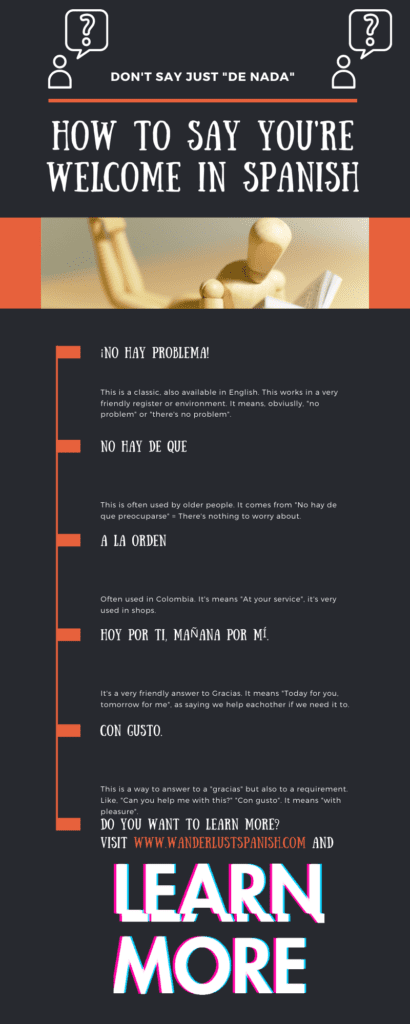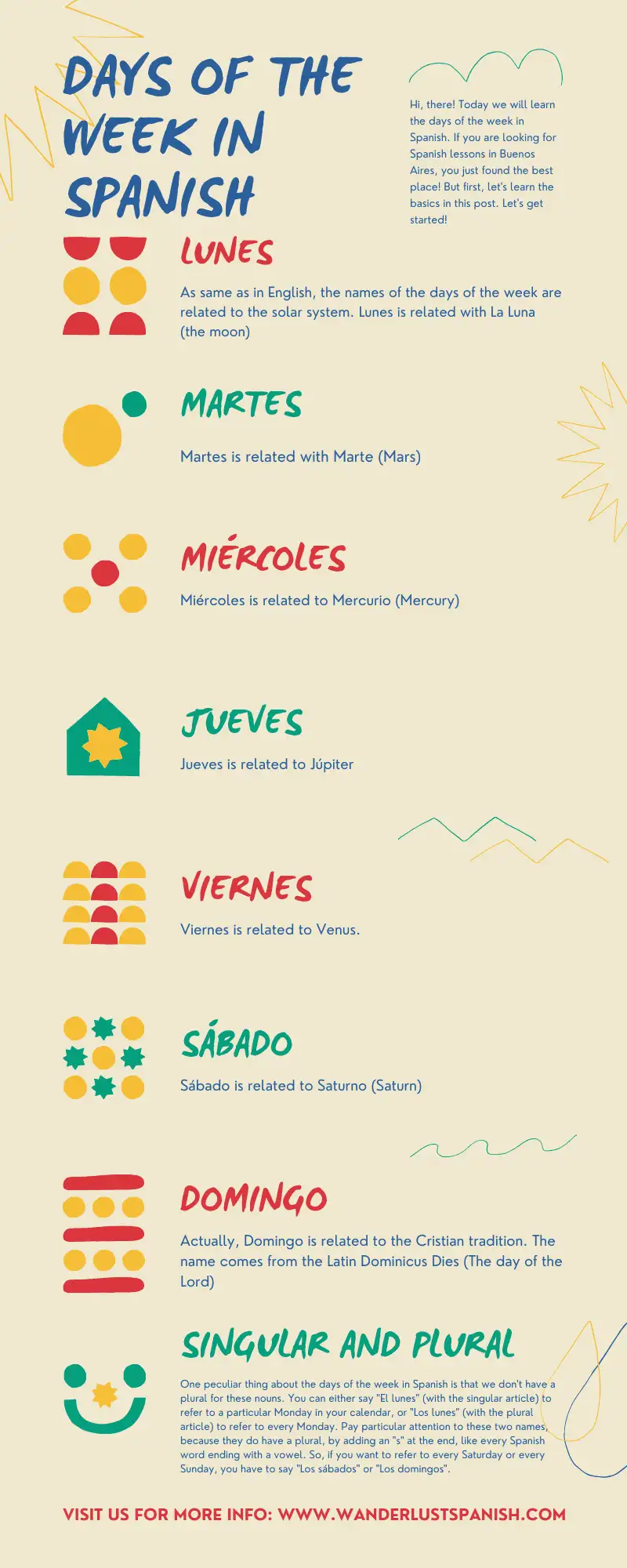In the word of languages, it’s very common to learn first the typical greetings in a very standard way. These expressions you can use here and there, in every context. But, as you go in-depth in the study and practice the language in real-life situations, you notice that you need more. You need more than that first word you learned to express certain concepts. That happens, for instance, with “de nada”. “De nada” is fine! Of course! But it’s not the only way to respond to thanks. That’s why today we wrote this post about How to say You’re welcome in Spanish.
Don’t say “de nada”. Alternatives.
If you had the opportunity of living in a Spanish Speaking Country, you may have heard some of these alternatives:
- ¡No hay problema! This is a classic, also available in English. This works in a very friendly register or environment. It means, obviuslly, “no problem” or “there’s no problem”.
- No es nada. This is a very literal answer. “It’s nothing”.
- Está bien. It works in a very informal register. “It’s okay”.
- No hay de que. This is often used by older people. It comes from “No hay de que preocuparse” = There’s nothing to worry about.
- A la orden. Often used in Colombia. It’s means “At your service”, it’s very used in shops.
- Gracias a ti / Gracias a vos / Gracias a usted. This is “Thank to you” (Gracias a usted is used in formal situations).
- Hoy por ti, mañana por mí. It’s a very friendly answer to Gracias. It means “Today for you, tomorrow for me”, as saying we help eachother if we need it to.
- Estamos para servirle. This is very formal and often used in shops. You can see it written in advertising. “We are here to serv you” is the translation.
- Con gusto. This is a way to answer to a “gracias” but also to a requirement. Like, “Can you help me with this?” “Con gusto”. It means “with pleasure”.
- Es un placer. Very similar to the previous one, and also used in shops. “It’s a pleasure”.



Did you enjoy How to say You’re welcome in Spanish?
To learn how to express yourself in a more colloquial way is a very good option to acquire more vocabulary and have more options in mind when you interact with native Speakers. If you want to learn more, just contact us and have a trial lesson!









